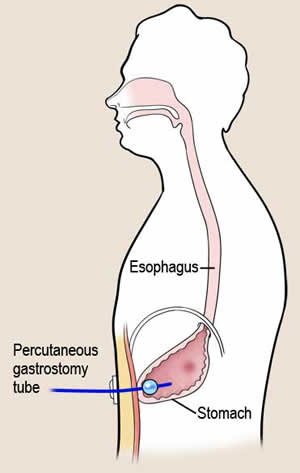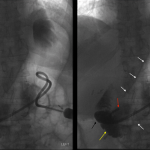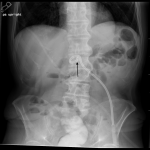OVERVIEW
While technically possessing a piece of medical equipment is not a condition within itself (but might instead point to a different medical condition the patient may have), imaging that demonstrates the presence of how a gastrostomy tube (G-tube) will appear on various imaging studies is shown below (as the radiological approach is similar).
BASIC CHARACTERISTICS
Fundamentally, a G-tube is a literal tube that connects the outside environment to the inside of the patient’s stomach. It is inserted percutaneously, transversing the wall of the stomach, as well as the abdomen. Often times it is used to provide nutrition to the patient (by injecting it directly into the stomach).

Here are some general features of this condition that might be appreciated across modalities:
- Shape: as the name suggests, this piece of medical equipment is shaped as a tube. Other features (such as a balloon, pig-tailed tip, etc.) may or may not be present
- Location: the tip of this tube should terminate inside the stomach.
FLUOROSCOPY (X-RAY)
Key features of the appearance of this equipment on this imaging modality are:
- Shape: as the name suggests, this piece of medical equipment is shaped as a tube. Other features (such as a balloon, pig-tailed tip, etc.) may or may not be present
- Location: the tip of this tube should terminate inside the stomach.
Click on the thumbnails below to see examples of this condition utilizing this imaging modality:
ABDOMINAL X-RAY
Key features of the appearance of this equipment on this imaging modality are:
- Shape: as the name suggests, this piece of medical equipment is shaped as a tube. Other features (such as a balloon, pig-tailed tip, etc.) may or may not be present
- Location: the tip of this tube should terminate inside the stomach. If the stomach is not visualized generally a properly placed tube may terminate in the epigastrium of the patient.
Click on the thumbnails below to see examples of this condition utilizing this imaging modality:
Page Updated: 09.04.2017


